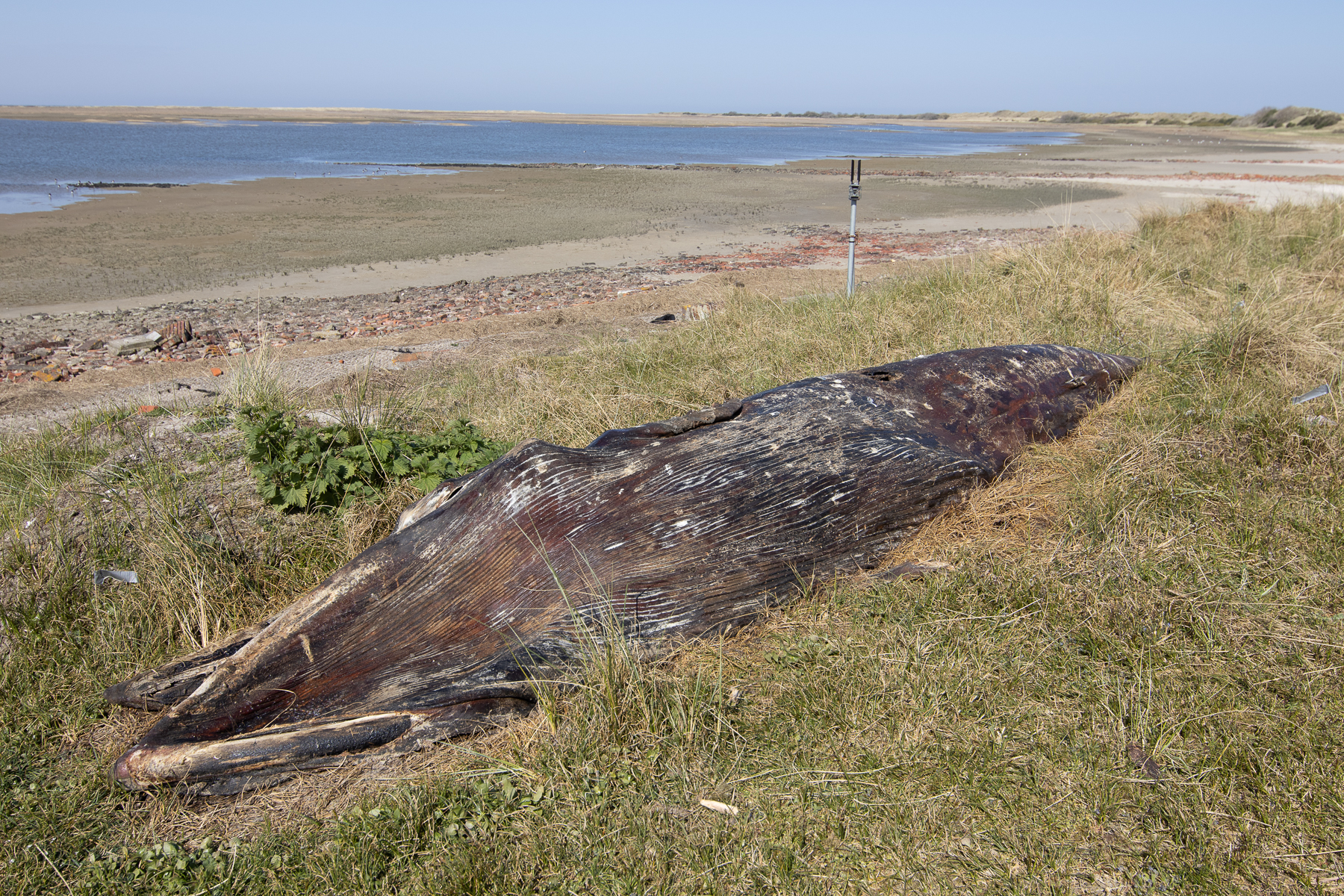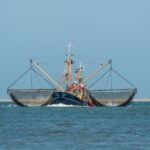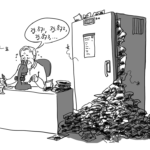On a sandbank called Rottumerplaat lies a slowly decomposing whale carcass. The decomposition and its effects on the surrounding nature are being monitored with scientific precision.
The carcass in question is that of a young male minke whale that washed up on the island on 25 November last year. At least, that is when it was spotted by a fisher and reported to the crew of the ministry of Agriculture’s surveillance boat De Harder. ‘They established that it was a dead whale and named it Godfried,’ says Hans Verdaat, a researcher at Marine Research in Den Helder. ‘After Godfried Bomans,’ explains his colleague Martin Baptist. ‘Precisely 50 years ago this year, the writers Jan Wolkers and Godfried Bomans both spent a week in a tent on Rottumerplaat. Godfried couldn’t stand it. He didn’t feel at home,’ he laughs, ‘any more than this whale does.’ ‘Groningen humour,’ adds Verdaat, ‘mixed with a sense of history.’
Beached whales usually have to be cleared away. That is not just a costly operation, says Baptist, it is also a pity. ‘Dead animals are part of nature too. So why don’t we leave an animal like this where it is? That is part of the story behind this pilot study. The other part of the story is that we’ve been talking for several years about letting a whale carcass sink in the Waddenzee. A carcass underwater would be enriching for nature.’ These two ideas suddenly came together when Godfried washed up on Rottumerplaat. Instead of sinking in the sea, his last resting place was on the island. In the dunes, safely above the storm line so that he couldn’t be washed back into the sea.
Recordings
And that is where Godfried has been lying since the end of November. In splendid isolation, but subject to constant surveillance, sampling and measuring. A total of seven cameras record developments. Baptist: Four of those cameras – one in each wind direction – take a photo every hour, day and night, with additional photos triggered by movement.’ Those images are sent to a special email address via a 4G link. ‘Godfried is the only dead whale with his own email address,’ grins Baptist. ‘But I’m not going to give you the address, because I don’t want any spam.’ He looks at the photos that come into the inbox. Three secondary cameras take additional photos. But there is a lot more going on, explains Verdaat. ‘During our monthly visits, we use three cameras linked to an altitude measurement to accurately determine the position of the carcass in 3D. That helps us measure changes to the carcass precisely. We record the vegetation in the immediate vicinity, there are three insect traps, and we take soil samples and fungus samples from the skin.’
That smell is not too bad
Verdaat and Baptist have just come back from visiting Godfried. Thanks to Covid, there was no room for passengers. But to give a whiff of the Godfried experience, Bapist gets out a bottle of soil soaked in juices from the carcass. ‘Smell it,’ he suggests, ‘Then you’ll know what it smells like when we’re doing field work there. It’s perfectly safe.’ The sample smells stale but bearable. ‘That smell is not too bad,’ says Verdaat. ‘People think you can smell a dead whale on the beach a kilometre away, but that isn’t really true. It travels 10 metres at the most.’
Island in winter
So the smell isn’t a problem. Or perhaps it is, since after six months of decomposition there is remarkably little visible change. Godfried still looks amazingly presentable. ‘That surprises us too,’ says Baptist. ‘I thought the carcass would disintegrate a lot faster, that it would get torn open and bits of whale would be scattered over the beach.’ ‘In the winter I would certainly have expected 30 to 40 great black-backed gulls around the carcass,’ adds Verdaat. ‘Last month there were two sea eagles sitting a couple of hundred metres away, but they didn’t even come and look! There are some smaller birds, but they can’t do much with this carcass. The peck at it but they don’t get through the skin. Not even at the places where we took a skin sample.’
‘You mustn’t forget,’ Verdaat goes on, ‘that this is an uninhabited island. The only large mammals are rabbits and grey and common seals. There are no rats, foxes, mustelids or wild boar. The usual suspects that would devour a carcass like this are not here.’ ‘And don’t forget that it was winter,’ says Baptist. ‘Now it’s warming up, we are expecting a lot more developments. We are hoping for carrion beetles, for instance. They are spectacular species if you’re into beetles. Carrion beetles don’t fly in winter and they have to come from the mainland, which is about 12 kilometres away. Will they smell this carcass, and can they reach it? That is interesting.
Now it’s warming up, we expect more developments, like carrion beetles
The Godfried pilot will go on at least until the summer. The experiment can be followed on the website https://basismonitoringwadden.waddenzee.nl/pilots-en-projecten/walviskadaver, where there are monthly reports and time lapse videos of the daily photographs. There is more information about stranded whales in the Netherlands on https://www.walvisstrandingen.nl

 Godfried the whale carcass has been lying in the dunes of Rottumerplaat since the end of November 2020. ‘I thought the carcass would disintegrate a lot faster, that it would get torn open and bits of whale would be scattered over the beach,’ says WUR researcher Martin Baptist. The photo was taken by his colleague Hans Verdaat.
Godfried the whale carcass has been lying in the dunes of Rottumerplaat since the end of November 2020. ‘I thought the carcass would disintegrate a lot faster, that it would get torn open and bits of whale would be scattered over the beach,’ says WUR researcher Martin Baptist. The photo was taken by his colleague Hans Verdaat. 

